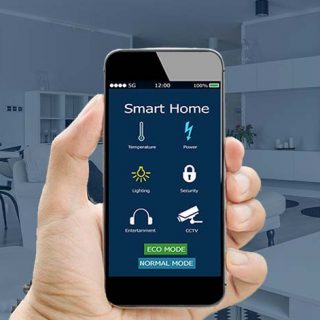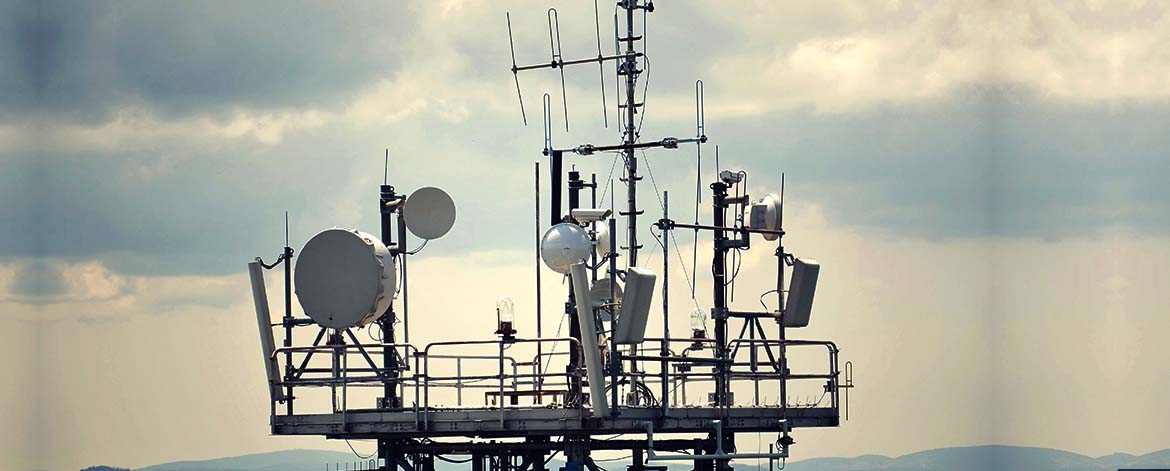Nowadays, the market is driven to design products with multiple RF protocols in a single box, known as Gateway. There are many and varying benefits of wireless connectivity which delivers better user experience and different protocols which offer complementary strengths. Every IoT device can communicate with the internet over different protocols, whether it can be Zigbee, Bluetooth, Z-Wave, and Sub-1 GHz or some proprietary protocols. Multiprotocol(radio) gateways have an essential role in IoT Infrastructure as they collect data from sensor farms and push it on the internet through Wi-Fi, cellular, or other wired or wireless networks.
A combination of multi-radio and multi-protocol solutions accommodate two or more radios running different multiple protocols at the same or different frequency spectrum simultaneously. This approach avails more efficient and reliable data flow by taking advantage of different protocols. Because of this end-users can take full advantage as they are able to connect multiple devices operating on different RF bands and protocols through a single unit.
Key challenges in designing a Multiprotocol Compact RF Hardware
The multi-protocol hardware has emerged as a response to the recent popularization of multiple distinct communication protocols. With that, there are some critical challenges which the OEMs are facing in designing the multi-radio hardware:
- Multi-radio hardware requires an extensive amount of time in antenna selection, it’s placement, simulation, memory estimation, enclosure design, material, and field testing
- Control accurate impedance to reduce the interference, return losses, co-existence between co-located radios so it can comply with governing bodies like FCC and CE
- If there are two or more radios which are running in concurrency and sharing the same spectrum then there will be co-existence, which can cause mutual interference
- Measuring performance parameters like communication latency, range, efficiency, and reliability of multi-radio hardware
- Co-existence tends to affect the performance of the device which can result in packet loss or data corruption, popping and crackling noise in the audio, reduced operating range, and coverage
- Regulatory compliance with the different geographical regions would also be challenging when multi-radio hardware comes into the picture due to different standard applicability
Things to take into account while developing Firmware for Multi-radio Hardware
The IoT application of today is becoming ever more complex, and it increases the demand for memory capacity. Let’s understand the challenges in hardware which comes with memory and firmware:
- Developing user-friendly and flexible embedded applications requires complex state machines, great power optimization, memory density, and CPU performance. RF SoC’s or module requires more flash memory and RAM optimization for optimum performance
- Providing over-the-air (OTA) firmware update capabilities requires enough flash memory to store Bootloader and twice the size of application firmware in order to hold the old firmware while buffering the new if a product is to be competitive in today’s thriving IoT market
- To manage multiple radios with various networking architectures simultaneously in real-time without losing performance
- With no power source, flash memory also retains user configuration and secure keys content for years, as the information from the flash memory can be read and written thousands of times during the product’s lifecycle. In such a scenario, utilizing the RAM information can be quickly written to read, which enables the processor to work at such high speeds and enables edge processing
On the basis of the above challenges, let’s take a small example, A complex wearable/sensor/automation application could require the 128 kB RAM and 512 kB flash offered by the RF module. A relatively simple beacon application may only need the 24 kB RAM and 192 kB Flash.
How VOLANSYS best practices are helping to overcome the Hardware & Firmware challenges?
To address the above multi-radio hardware, memory, and firmware challenges, let’s understand how VOLANSYS covers the pain areas of OEMs with their hardware expertise helps to improve the overall performance of the product.
VOLANSYS follows a standard approach which starts with product understanding with all RF requirements and other peripherals, lists out all RF interface protocol frequency, then carries out a task like a module/ SoC selection, relatively antenna selection, identifies enclosure with its materials, placement of module, and its antenna. An early stage of PCB design will make 2D floor planning, which helps to understand the actual placement of RF modules and parameters in detail:
- Module/SoC Selection: Selection criteria are RF protocol, modulation technique, manufacturer, MCU/processor requirement based on the driver code availability, RAM, flash, OS, regulatory approval, max Tx output power, receiver sensitivity, power supply, and data rate to deliver the significant performance
- Memory Budgeting: Memory budgeting is a very significant parameter for any RF module, it is defined or calculated purely based on the RF stack size, support for the number of the devices, and application business logic. Before finalizing the module/ SoC, the memory-related requirements should be well calculated and clear
- Antenna Selection and Placement: Antenna selection is the most essential factor in multi-radio hardware, as the selection depends on frequency range, polarization, radiation pattern, gain, feed point impedance, VSWR, and power handling capability use cases like range coverage and space. For example, chip antenna vs PCB trace antenna vs external antenna To reduce the co-existence and interference between 2 same frequency modules, antenna placement is playing a vital role. In this scenario, antennas should be placed perpendicular to each other. We are trying to make proper isolation between 2 RF as per regulatory requirement, isolation between 2 antennas should be equal to or greater than 30 dB. Sometimes, due to space constraints, it is not possible to achieve such isolation, in this framework, we need to take care of interference of all RF antennas and radiation patterns. We also need to play around transmit power of RF module/SoC based on the application need and performance
- RF Simulation: Simulation is an effective strategy to predict radio issues in the early stage of product development. There is multiple simulator software like HFSS, CST, ADS, etc. which should be wisely used according to the problem type. VOLANSYS can help to do early Antenna simulation which gives results and confidence on the Antenna placement location, range improvement and RF path tuning if any frequency shifting due to enclosure material
- Enclosure Design and it’s Material: To achieve the best, try to finalize a plastic enclosure with the material which can balance out the environmental, reliability, and RF performance needs. Sometimes, the COTS enclosure can result in placement challenges due to already predefined size and structure while in custom design, we have the flexibility for the PCB placement and can get better isolation and antenna placement options. Enclosure material’s permittivity/dielectric constant selection plays a vital role in the RF performance. A few of the good plastic materials which are good at 2.4GHz are PC, ABS, PC+ABS, PVC. Sometimes we need to choose metal enclosure as well for the outdoor and industrial applications, in this scenario, external antenna selection would be the crucial point
- Design Validation Testing: RF interface’s design validation is very important. Need to define sets of validation test cases like antenna matching impedance and return loss, RF output power measurement, receiving sensitivity, range test indoor as well as outdoor, worst-case RF environment with heavy traffic scenario, and monitor with the analyzer. To execute some of the validation tests need VNA, spectrum analyzer, DSO, and RF chamber kind of lab instruments.
About VOLANSYS
VOLANSYS has been diligently involved in offering Product Engineering, Digital Engineering, and Quality Engineering from conceptualization to manufacturing. Our proven expertise in hardware engineering services & solutions including design and development of complex, faster, reliable, and efficient solutions. We have a wide range of service portfolio offerings supporting design, prototyping, mass production, and certification under a single roof.
Here are some of the multi-radio hardware success stories listed which give an overview of how VOLANSYS helped their client in developing the complete hardware solution
Project 1: Hardware Design Validation of Wall Plug Providing Omni-Channel Connectivity
Project 2: Mesh Wi-Fi Router System, Cloud, and Mobile App Development
Project 3: Miniaturization of a Moisture Sensor Solution
Project 4: Development of a Portable Mobile Hotspot (Mi-Fi) Device
About the Authors:

Gulrej Ansari
Gulrej works with VOLANSYS Technologies as Principal Engineer and looks after Embedded Hardware design, development, and end-to-end solution. Gulrej has rich experience around 10+ years in different domain product designs like Industrial, Consumer with multi-radio RF protocols. He takes through complete product development which includes requirement study, architecture design, final regulatory certification to manufacturing transfer.

Punit Patel
Punit works with VOLANSYS Technologies as an Associate Hardware Engineer. He has a strong knowledge of hardware designing of Low Power and Long Range IoT Devices.









